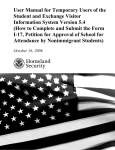Download Practice Resource
Transcript
Practice Resource Adding Non-Campus Instructional Sites to Form I-17 Version: November 30, 2011 SEVP has been instructing schools to update their Forms I-17 with all “instructional sites,” even if those sites do not constitute campuses. This NAFSA practice resource is meant to assist schools in managing their Form I-17 given this SEVP policy. Contents Brief background ....................................................................................................................................... 2 What is the basis of SEVP’s position that a school must include non-campus instructional sites on its Form I-17? ................................................................................................................................................. 2 SEVP’s evolving position ........................................................................................................................... 2 Some practical implications of SEVP’s non-campus instructional site policy ........................................... 5 Use of the Add New Campus function in SEVIS .................................................................................... 5 Site visits and site visit fees................................................................................................................... 7 I-20 issuance and transfers ................................................................................................................... 7 DSOs and instructional site staffing questions ..................................................................................... 8 Accreditation and licensure questions.................................................................................................. 8 Recommendations .................................................................................................................................... 9 1 Adding Non-Campus Instructional Sites to Form I-17 © NAFSA 2011. NAFSA Practice Resources and Advisories do not constitute legal advice. Brief background It has always been clear that a school must include on its Form I-17 all branch campuses where its F-1 students will be studying (unless those campuses obtain separate SEVIS certification). For some time now, however, SEVP has been advising schools that they should also update their Forms I-17 with all “instructional sites,” even if those sites do not constitute campuses. Schools often first become aware of this during the recertification process, which can cause great consternation, especially if the school had delayed filing its application for recertification until towards the end of its 180-day recertification filing window. This NAFSA practice resource will review SEVP’s position on adding instructional sites to Form I-17, and discuss several key practical implications. What is the basis of SEVP’s position that a school must include non-campus instructional sites on its Form I-17? SEVP’s position that campus as well as non-campus instructional sites must be included on Form I-17 is based on 8 CFR 214.3(a)(1), which states that an I-17 petition for initial certification or recertification, “must identify by name and address each location of the school that is included in the petition for certification or recertification, specifically including any physical location in which a nonimmigrant can attend classes through the school (i.e., campus, extension campuses, satellite campuses, etc.).” SEVP’s reading of this provision focuses on the phrase “any physical location in which a nonimmigrant can attend classes through the school,” despite the parenthetical phrase that references only types of campuses, and the despite the fact that the remainder of the F-1 regulations, SEVIS, and the SEVIS RTI User Manual use only the word “campus.” Out of context, this phrase could be read to refer to any location, even spaces rented by a school, where one might find a desk, an instructor, and an F-1 student. SEVP’s evolving position The regulatory language above was added to 8 CFR by the final SEVIS fee and recertification rule in 2008 [73 Fed. Reg. 55683 (September 26, 2008)]. At that time, there were numerous questions regarding the scope of the language, and how it related to the term “campus,” which appears throughout the remainder of the F regulations. In the supplementary information at 73 Fed. Reg. 55683, 55694, SEVP said that they chose not to clarify what a campus is in the rule: “Three comments requested that SEVP better define what a campus is and what is required of schools when a campus is added (e.g., when is a fee required). SEVP agrees with the comments but does not intend to make this clarification in this rule. SEVP, in the meantime, provides individualized guidance to schools on this issue. SEVP intends to propose a rule amending 8 CFR 214.3 to be in place when recertification begins and anticipates addressing this issue in more detail in that rulemaking.” 2 Adding Non-Campus Instructional Sites to Form I-17 © NAFSA 2011. NAFSA Practice Resources and Advisories do not constitute legal advice. Although recertification began in May, 2010, the rule to clarify the term “campus” that was contemplated in 2008 has never been published even in proposed form. Curiously, in the boiler-plate compliance guidelines that SEVP sends along with its recertification approval notices, SEVP includes the following statement: “… a broadcast has been released explaining in detail the definition of an instructional site.” However, the only broadcast message members have reported receiving is an October 2, 2008 broadcast message, sent to SEVIS users shortly after the recertification rule was published in 2008. That message presented a campus-focused definition of instructional site: All instructional sites within a school group that meet the Department of Education definition of a “branch campus” or at which an international student can either complete their degree requirements for a program of study or complete more than 51% of their requirements for a program of study must be listed on the petitioning school’s Form I-17;” and The 2008 broadcast message also stated that a school must “Ensure that all campuses (i.e., instructional locations where a student can receive 51% or more of an approved degree or certification) are listed on the Form I-17. Addition of a new campus requires a fee of $655.” In its Recertification Primer PowerPoint presentations starting in autumn 2008, SEVP added the following two elements to the idea of “instructional sites”: Locations that meet “most but not all of the branch campus requirements (e.g. All records are centrally stored)" should also be added to a school’s Form I-17; and that "These additional locations must have... A school official who can physically verify the presence of international students and assist them when necessary." SEVP’s position continued to evolve over time, moving from the campus-focused guidance of the October 2, 2008 broadcast message, towards a much broader concept of instructional site: In its Spring 2010 Recertification Primer and its Recertification presentation at the NAFSA 2011 annual conference, SEVP’s slideshows referenced only “instructional sites,” and no longer contained the more detailed language included in prior presentations. Verbally, at that point, SEVP also started saying that even non-campus instructional sites had to be added to Form I-17. In 2011, SEVP added several more factors to consider when determining whether a location constitutes an “instructional site” for purposes of being included on a school’s Form I-17: In the slides accompanying a Recertification webinar that SEVP made available on October 11, 2011, SEVP added the notion of “ownership and control” to the factors to consider: 3 Adding Non-Campus Instructional Sites to Form I-17 © NAFSA 2011. NAFSA Practice Resources and Advisories do not constitute legal advice. In its Fall 2011 conference presentation, "Recertification: Easy as Review, Sign, and Submit," SEVP added the idea of "shared bona fides," without explaining what they meant by that: Individual schools also report that SEVP has been including very specific queries relating to instructional sites in Requests for Evidence (RFEs) issued during the recertification process. To illustrate, here is a redacted example from one recent RFE, in which SEVP says, “Please note that if a nonimmigrant student is taking a class at a location other than your main campus that location needs to be listed on your school’s Form I‐17.” Adjudication of your Recertification petition cannot take place until you have responded to this 4 Adding Non-Campus Instructional Sites to Form I-17 © NAFSA 2011. NAFSA Practice Resources and Advisories do not constitute legal advice. request. According to your school’s website, your school has additional locations and/or instructional sites that are not listed on your school’s Form I‐17. These are the A Campus, B Campus, C Campus, D Center, E Center, and H Site locations. Please note that if a nonimmigrant student is taking a class at a location other than your main campus that location needs to be listed on your school’s Form I‐17. 1. An explanatory statement regarding each of the above‐referenced locations and their relationship to your school. 2. Indicate whether or not nonimmigrant students are currently studying at any of these locations, or whether you may expect nonimmigrant students to possibly do so in the near future. This encompasses even one student taking one class at such a location. Please specify individual locations. 3. Indicate whether or not a full course of study could be completed exclusively at each of these locations, or if a student must also take courses at another location to meet his or her degree requirements. 4. Indicate whether or not these locations are wholly owned and operated by your school or whether they may be rented space in a different school, community center or other facility. After the school submitted the requested information pursuant to the above RFE, SEVP sent another RFE, stating: Thank you for your response to the previous request for evidence. The following request for evidence is due no later than ######, 2011: 1. Based on your response, please add to your Form I‐17 all locations at which nonimmigrant students currently study, or may study in the near future. Any location at which a nonimmigrant student takes classes must be listed on the Form I‐17. 2. Be sure to click the SUBMIT button to fully process your changes. Some practical implications of SEVP’s non-campus instructional site policy A number of important practical implications arise out of an SEVP policy that directs schools to add noncampus instructional sites to their Forms I-17. Use of the Add New Campus function in SEVIS Currently, all SEVIS functionality and labeling comes from a “campus-based” point of reference. SEVP has instructed schools on an individual basis to use the Add New Campus functionality to add noncampus instructional sites to their Forms I-17, since no other functionality currently exists in SEVIS to add such locations. The Add New Campus link appears on the PDSO’s Campus Information Screen of the school’s SEVIS Form I-17 (page 5 of 5). 5 Adding Non-Campus Instructional Sites to Form I-17 © NAFSA 2011. NAFSA Practice Resources and Advisories do not constitute legal advice. When the PDSO clicks the Add New Campus link, the Add Campus screen appears: When a non-campus instructional site is added using the Add New Campus function, SEVIS will treat that location just like a campus, because SEVIS was programmed to do only one thing – add a campus. This has the following practical implications in SEVIS: A separate school code will be assigned to the non-campus instructional site, as if it were a campus (i.e., it will be given a SEVIS school code that consists of an extension to the main campus code). Campuses and non-campus instructional sites will be listed together in the SEVIS Listing of Schools and Campus Information screens. Non-campus instructional sites and campuses will also appear in the same lists as campuses, since the current iteration of SEVIS does not distinguish between them. This may be confusing especially in the following contexts: o Schools that wish to transfer students to your school will see these locations and school codes in the School/Campus Search Results screen used in the Transfer Out process. o These locations will appear in the Listing of Schools screen that displays when you log into SEVIS. 6 Adding Non-Campus Instructional Sites to Form I-17 © NAFSA 2011. NAFSA Practice Resources and Advisories do not constitute legal advice. Since non-campus instructional sites are treated by SEVIS as full campuses, SEVIS requires at least a PDSO to be assigned to the location. The PDSO who added the instructional site does this by clicking the Officials link on the Campus Information screen, and following the normal steps to assign roles. The PDSO may assign him or herself as PDSO at the instructional site. Site visits and site visit fees A very practical question: Does a school that adds a non-campus instructional site to its Form I-17 have to pay a $655 site visit fee and arrange for a site visit to that site? Let’s take a look at the regulatory language regarding site visits and fees: 8 CFR 214.3(h)(1)(ii) establishes that: “SEVP will conduct a site visit for each petitioning school and its additional schools or campuses.” 8 CR § 103.7(b)(1) sets I-17-related fees with the following language: “Form I–17. For filing a petition for school certification— $1,700, plus a site visit fee of $655 for each location listed on the form.” Despite the fact that the regulations link site visits and site visit fees to “additional schools or campuses,” SEVP’s 2011 conference presentation slideshows state that the $655 site visit fee will be levied when an instructional site is added after filing for recertification: The Recertification slideshow presented at the NAFSA 2011 annual conference states: “Instructional site(s) – No Fee if addition made prior to Recertification. After Recertification, each instructional site will cost $655. The Fall 2011 conference presentation, "Recertification: Easy as Review, Sign, and Submit," states: “Instructional Site(s) - $655 fee if added after filing for Recertification.” Since the site visit provision at 8 CFR 214.3(h)(1)(ii) refers to “additional schools or campuses,” but the SEVP PowerPoint slide refers to “instructional sites,” it is unclear when a site visit will be required, and when a site visit fee must be paid, when a school adds a non-campus instructional site to its Form I-17.1 Schools with questions about this should contact the SEVP School Certification branch. I-20 issuance and transfers Non-campus instructional sites and campuses appear as campuses in the current version of SEVIS. This may be confusing in the context of issuing Form I-20, both initially and for transfers. Consider the following: Schools that wish to transfer students to your school will see these locations and school codes in the School/Campus Search Results screen used in the Transfer Out process. 1 SEVP’s opinion on whether a site visit fee must be paid when instructional sites are added also seems to be in flux. Compare the “fee requirements” slide in the 2011 presentation, which links site visit fee requirements to whether the I-17 update was done before or after recertification, to the version of the same slide in SEVP’s Spring 2010 Recertification Primer slideshow, which stated, “Instructional site(s) – No Fee.” 7 Adding Non-Campus Instructional Sites to Form I-17 © NAFSA 2011. NAFSA Practice Resources and Advisories do not constitute legal advice. Since a student might study at any or all of the locations listed on Form I-17, which location (all are labeled “campus” in SEVIS) should issue Form I-20? The SEVIS RTI User Manual for Form I-20 states that to create a new SEVIS record, you must “click the New Student link to the right of the name of the campus where the student is registering.” In SEVP’s October, 2011 Recertification webinar, however the SEVP representative states that I-20s would be issued from the main campus. Would it ever be necessary to transfer a student record from a campus to a non-campus instructional site within the same school? DSOs and instructional site staffing questions Since SEVIS does not distinguish between campuses and non-campus instructional sites, SEVIS requires at least a PDSO to be assigned to each location. The PDSO who added the instructional site does this by clicking the Officials link on the Campus Information screen, and following the normal steps to assign roles. The PDSO of the main campus may assign him or herself as PDSO at the instructional site. SEVP has not yet given written guidance on office/physical presence requirements for DSO coverage of instructional sites. Accreditation and licensure questions In addition to the sparse and ambiguous guidance that can be gleaned from SEVP’s public written statements on instructional sites, some schools undergoing school recertification have reported that SEVP is also asking schools to submit evidence that the non-campus instructional sites they have been told to add to their Form I-17 have also been authorized by the school’s accrediting body. Accrediting bodies, following Department of Education (DoEd) regulations, usually treat addition of campuses and other locations as “substantive changes” requiring an update to the school’s accreditation only under defined circumstances, related to how substantial the additional location is. DoEd regulations at 34 CFR 602.22 require accrediting bodies to “maintain adequate substantive change policies that ensure that any substantive change to the educational mission, program, or programs of an institution after the agency has accredited or preaccredited the institution does not adversely affect the capacity of the institution to continue to meet the agency's standards.” Those regulations then specifically direct accrediting bodies to review and pre-approve “the establishment of an additional location at which the institution offers at least 50 percent of an educational program” in order for the additional location to come within the scope of the institution’s accreditation. Typically, an accrediting body will consider new instructional locations that do not meet this definition to be permissible without approval by the accrediting body, and within the scope of the institution’s accreditation. For example, the Middle States Commission on Higher Education’s2 (MSCHE) substantive change policy divides new instructional locations into Branch Campuses, Additional Locations, and Instructional Sites,3 2 MSCHE accredits degree-granting colleges and universities in Delaware, the District of Columbia, Maryland, New Jersey, New York, Pennsylvania, Puerto Rico, the U.S. Virgin Islands, and several locations internationally. 3 MSCHE uses DoEd regulations to define Additional Location as a location “that is geographically apart from the main campus and at which the institution offers at least 50% of an educational program.” Refer to MSCHE’s full substantive changes policy for more information. 8 Adding Non-Campus Instructional Sites to Form I-17 © NAFSA 2011. NAFSA Practice Resources and Advisories do not constitute legal advice. and an MSCHE-accredited institution needs to seek MSCHE pre-approval only when adding Branch Campuses and Additional Locations. Locations that do not constitute a Branch Campus or Additional Location are termed “Instructional Sites.” Although Instructional Sites “should be noted on the annual Institutional Profile” the school provides to MSCHE, Commission approval is not required “for an Instructional Site to be included within the scope of accreditation.” If asked to document that a non-campus instructional site is included within the scope of a school’s accreditation, a PDSO may have to document a negative, i.e., document that the school’s accrediting body does not need to pre-approve such sites. A similar documentation challenge may arise when documenting that a school’s State licensure covers a site added to the school’s I-17. Recommendations Although there may be legal and practical arguments for why SEVP should not impose its current policy regarding non-campus instructional sites, schools will have to face the practical reality that not complying with this SEVP policy could impact the school’s certification as well as the immigration status of students who find themselves taking classes at instructional sites not listed on the school’s Form I-17. That being the case, schools may wish to do the following: 1. Identify all campuses, centers, and other sites where an F-1 student currently takes a class or may take a class through the school. a. Start with a review of your school’s Web site and your school’s IPEDS report to the Department of Education. SEVP will also be examining how your institution describes itself, and will expect your Form I-17 to be consistent with those descriptions. b. Learn how your school manages its instructional locations. For example, some schools may have an office of space planning that might have helpful information. 2. This is a group effort! Don’t go it alone. a. Consult with all key individuals within your reporting structure b. Incorporate key stakeholders outside your reporting structure c. Establish consensus on how your institution describes its instructional sites 3. Learn all you can about your school’s structure, governance, licensure and accreditation, and academic offerings. Prepare in advance for an SEVP request to provide documentation that shows the instructional site and the academic programs offered there are covered under your school’s current accreditation and licensure, what portion of a course of study a student can complete at the location, or other questions similar to the ones that appear in the RFE example in this resource. a. Which body has accredited your school? b. Which State authority licenses your school? c. Visit the Web sites of those authorities. Learn all you can about their policies and procedures. d. Who at your school manages the relationship with those authorities? e. Who at your school can help document your school’s accreditation, licensure, and organizational structure? f. Consider developing protocols for dealing with the fact that all locations listed on a school’s Form I-20 will be assigned a school code, and appear in lists associated with the school transfer process and creating SEVIS records. 9 Adding Non-Campus Instructional Sites to Form I-17 © NAFSA 2011. NAFSA Practice Resources and Advisories do not constitute legal advice. 4. Learn all you can about these issues. a. Consult the source documents referenced in this practice resource. b. Visit the NAFSA Web site and SEVP Web site frequently, to check for updates. c. Check with NAFSA colleagues who have gone through the I-17 update and school recertification processes. d. Contact the SEVP School Certification branch or the SEVIS Recertification Hotline with fullydeveloped and well-considered questions 5. Get started early. Keep the 180-day recertification window in mind when timing your I-17 updates; six months passes very quickly, and there are no extensions. a. Review your Form I-17 on a regular basis, and update when necessary. Don’t wait for recertification to do this. b. Be aware that changes in ownership or school location will automatically trigger a site visit. c. If you get your 180-day notice while your I-17 update is pending, fax an “update pending” statement to the SEVP recertification branch. This alerts SEVP that the I-17 update must be prioritized. d. If you receive your notice of eligibility to apply for recertification before you have submitted your I-17 update, submit the update within 5 days of receiving your 180-day notice, then fax an “update pending” statement to the SEVP recertification branch. Your 180-day clock continues to run, and will not be extended. You must update your I-17, have the update approved, and file your recertification application no later than 11:59 pm the day before your Certification Expiration Date, or your school certification will be automatically withdrawn. e. If you have already submitted your recertification application and you receive a request for evidence (RFE) from SEVP, respond to the RFE quickly and thoroughly, within the time frame listed on the RFE notice; usually SEVP gives 15 days, but do not delay. f. If your recertification application has been approved but SEVP has “flagged” your recertification scorecard and instructed you to add locations to your I-17, do so within the time frame given on the recertification approval notice. 6. Always respond quickly and thoroughly to SEVP requests for evidence or documentation, before the deadline included in the request. a. Don’t be surprised by unwritten policies and successive requests that build upon prior requests (for example, a request regarding an instructional site can lead to a request about accreditation and licensure, etc.) b. Be prepared for the limits of SEVIS, which was not designed to collect the granular information SEVP is now requesting (for example, the I-17 field for listing accrediting agencies is limited to 100 characters; SEVIS does not distinguish between campuses and non-campus instructional sites, etc.) c. Don’t be surprised by conflicting information on SEVP’s Web site and elsewhere (for example, does a site visit have to be arranged and a fee have to be paid when a new instructional site is added?) d. Call the SEVIS Recertification Hotline with fully-developed and well-considered questions. 10 Adding Non-Campus Instructional Sites to Form I-17 © NAFSA 2011. NAFSA Practice Resources and Advisories do not constitute legal advice.










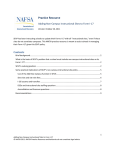
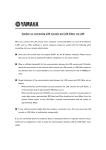
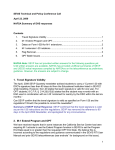
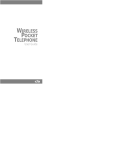
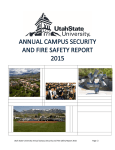
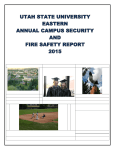

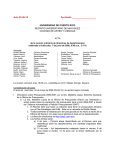

![Manual[DOWNLOAD]](http://vs1.manualzilla.com/store/data/005897454_1-7b43247b19e54aa42c3777609ebafaf8-150x150.png)
